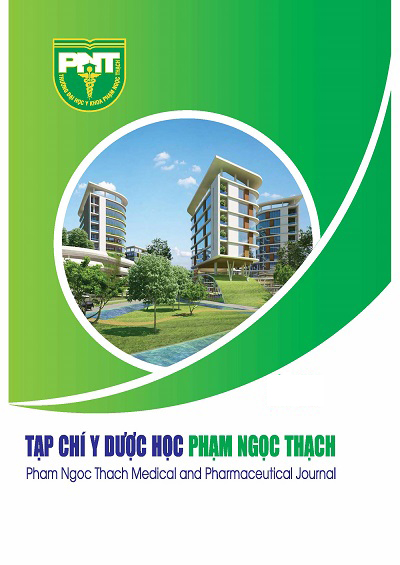Nghiên cứu bào chế hệ Nano tự nhũ hóa (Snedds) chứa Berberin
Formulation of self - nanoemulsifying drug delivery system (Snedds) containing Berberine
Tóm tắt
Đặt vấn đề: Berberin là một hoạt chất từ dược liệu được sử dụng nhiều trong y học cổ truyền và gần đây được nghiên cứu có tiềm năng tốt trong điều trị các bệnh chuyển hóa. Tuy nhiên, berberin có sinh khả dụng đường uống thấp do ít tan trong nước và hấp thu kém, chính vì thế, hệ vi tự nhũ hóa (SNEDDS - Self-Nanoemulsifying Druf Delivery System) là một giải pháp cải thiện sinh khả dụng có tiềm năng ứng dụng cao.
Đối tượng và phương pháp nghiên cứu: Độ tan của berberin trong một số tá dược có khả năng điều chế SNEDDS được khảo sát, từ đó chọn lựa các tá dược có tiềm năng để xây dựng công thức với khả năng tải berberin tốt nhất; phương pháp bào chế và khảo sát đánh giá các tính chất của SNEDDS chứa berberin được tiến hành để sáng lọc và lựa chọn công thức. Hàm lượng berberin trong các công thức được định lượng bằng phương pháp quang phổ UV-Vis.
Kết quả: Trong các pha dầu khảo sát, berberin tan tốt trong Capryol 90, Peceol và nói chung tan tốt trong các chất diện hoạt Tween 80, Tween 20, Span 80 và Cremophor RH40. Với chất đồng diện hoạt, berberin tan tốt trong Transcutol HP, PEG 400 và propylen glycol. Hệ công thức SNEDDS chứa berberin được tạo thành đạt các yêu cầu về độ bền nhiệt động và kích thước giọt với thành phần gồm 15% Capryol 90, 45% Tween 20, 40% hỗn hợp đồng diện hoạt glycerin và PEG 400 tỷ lệ 1:1 tải được 1% berberin (CT I29). Quy trình định lượng berberin trong SNEDDS được thực hiện bằng phương pháp UV-Vis tại bước sóng 428 nm.
Kết luận: Đề tài đã xây dựng thành công công thức bào chế hệ SNEDDS chứa berberin quy mô phòng thí nghiệm. Hệ đạt các yêu cầu về độ bền nhiệt và kích thước giọt.
Abstract
Objectives: Berberine, a natural compound was usually to treat dysentery, amoeba infection or enteritis in traditional medicine and in recent years, it has been proved high potential for metabolic deseases treatment. However, berberine is low-water - solube and low - absorbed, which leads to low bioavailability, and SNEDDS was proved as a potential solution.
Materials and Methods: Berberine solubility in several SNEDDS excipients was usually used to determined and from that, SNEDDS containing berberine was formulated and evaluated. Quantification of berberine in SNEDDS was determined by UV-Vis spectrophotometry method.
Results: In oil phase, solubility of berberine was highest in Capryol 90, followed by Peceol and generally soluble in some surfactants such as Tween 80, Tween 20, Span 80 and Cremophor RH40. In cosurfactants, berberine was soluble highly in Transcutol HP, PEG 400 and propylen glycol, respectively. The selected components for 1% - loaded berberine SNEDDS (formula CT I29) were Capryol 90 (30%), Tween 20 as surfactant (40%) and PEG 400 : propylen glycol with ratio 1:1 as co-surfactants (30%), and met the properties of SNEDDS. UV-Vis method at wavelength of 428 nm was used for the quantification of berberine in SNEDDS.
Conclusion: The SNEDDS containing berberine was successfully prepared at laboratory scale. This SNEDDS met the physico - chemical properties of SNEDDS and droplet size.

